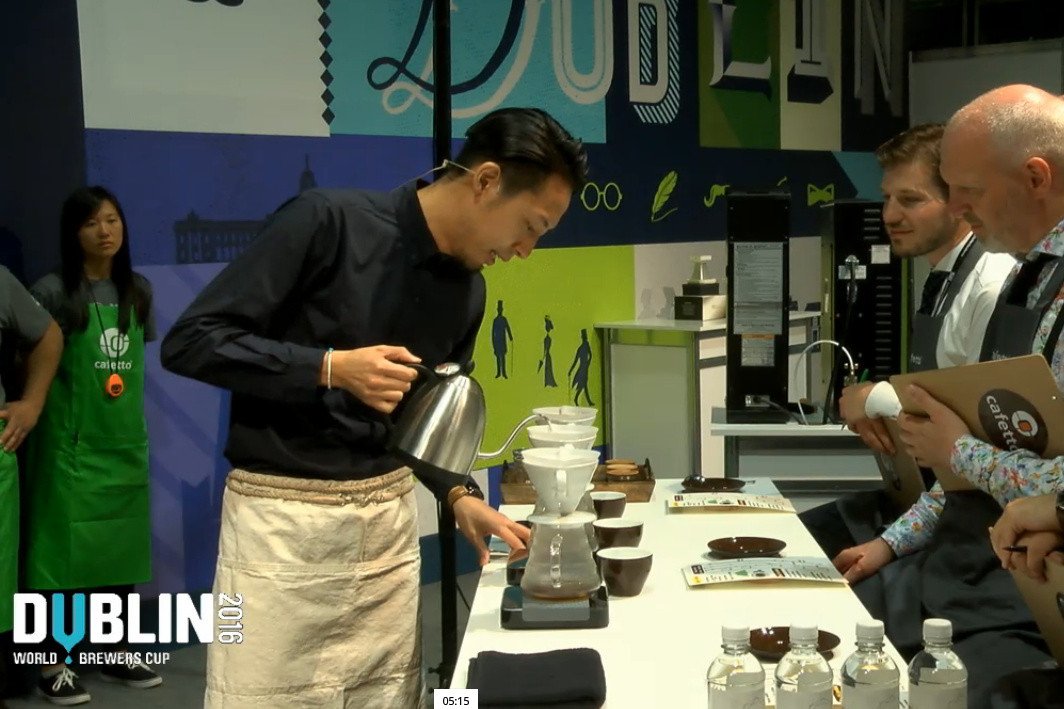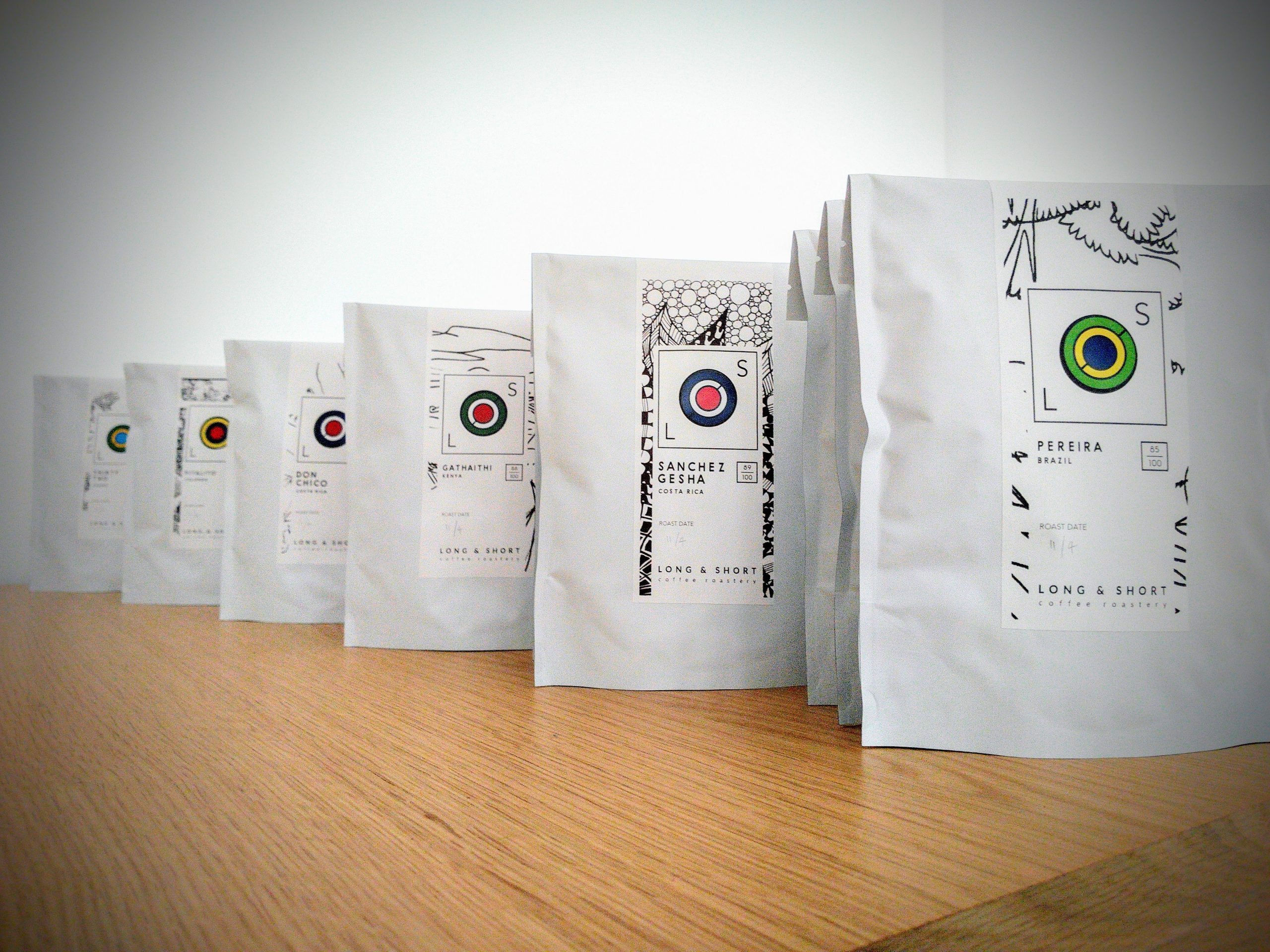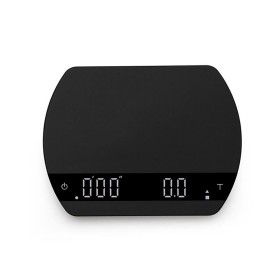87+ POINT
SPECIALTY coffees.
BUY NOW
During the World of Coffee event in 2016, Tetsu Kasuya won the Brewers Cup with a unique V60 brew recipe that uses the first two pours to manipulate the coffee’s acidity and sweetness. Introducing: the 4-6 method.
Although we covered Chad Wang’s 2017 winning recipe previously, I thought it would be interesting to resurrect the winning recipe from last year’s champ. Reason being that this recipe is incredibly unique and worth a try for all those of you that are seeking further experimentation.
It’s brilliant and tastes bloody good, too — in fact, a modified version of this is now the house recipe for pourover coffees in the Long & Short coffee shops!
The basic theory behind Tetsu’s 4-6 method focuses on the amount of water in the very first pour; effectively this defines the coffee’s acidity or sweetness. If you use more water, the coffee will produce more acidity. If you use less water, the coffee will produce more sweetness.
The remaining water is then divided into equal parts to make up the rest of the brew, according to the strength ratio desired.
Equipment required
If you’re new to this then you will want to grab the following equipment. (Experienced pros, feel free to jump into the method below now!)
- V60 dripper cone – we find the plastic cones we stock by Hario to be the best since the temperature is more stable, and they’re super cheap!
- A set of scales like a Lunar or Felicita Arc – these will be fast and accurate to 0.0g or 0.00g, really important at home for making small volumes like 1-2 drinks
- The best coffee you can get your hands on! – obviously, take your pick but we recommend African coffees with pronounced aromatics and clarity, like Ethiopians and Kenyans. Tetsu used a 90+ Gesha, but a high quality 87+ Ethiopian will taste just as good, if not better.
Technical specifications
- Coarse grind – we use one setting back from ‘Paper Filter’ on our Ditting
- 20g coffee to 300g of water (or 1:15 ratio)
- 92 degree celcius water temperature (we find anything in the range of 92-95 to be fine)
- Water purity – 0.33ppm / 6.6pH for enhanced clarity
- Brew time – 3 minutes and 30 seconds
Method
A Rule of 40/60
The pours are split into 2 sections of 40% and 60%, with a total of 5 pours in total.
Sweetness vs Acidity?
The two first pours make up the initial 40%.
- For more acidity, increase water ratio in the first pour (Tetsu used 50g for his winning brew’s first pour)
- For more sweetness, decrease water ratio in the first pour
Manage brew strength
The last three pours are poured with the remaining 60% of the water.
- The remaining water (60% of total) at the desired ratio of concentration (usually 1:15 – 1:17) is then divided into 3 equal pours
- Pours only start once previous pour has completely drained
Why let it completely drain?! I’ve been topping it up like a cup of soup for years!
We’ve long been a fan of minimal agitation and looking after a neat bed. It seems Tetsu thinks much the same. It helps to enhance brew efficiency by increasing strength from the coarse grind. This allows us to get the nuances of the coffee, without the coffee becoming weak, or bitter.
Plan head FTW
Timings are largely irrelevant as long as the grind is dialled in correctly, but planning the numbers is key to managing this technique.
I personally love the control this method offers, since it’s not often you see recipes that offer this level of precision.
If you want to see the winning recipe in absolutes to use as a starting point, take a look here:
Tetsu’s 4-6 method recipe in a nutshell
- 92C (197.6F) water temp
- 20g coffee – 300g water (1:15 ratio)
- Coarse grind
- 0.33PPM / 6.6 PH water (almost distilled)
- Finish time — 3:30
Pours
- First = 50g (42% of 120g = 40% of total) — less water in the ratio, targeting sweetness
- Second = 70g (58% of 120g = 40% of total) — the top up for 40% of total
Remaining water = 180g / 3 pours = 60g per pour
- Third = 60g
- Fourth = 60g
- Fifth = 60g







So maybe 5 * 60 when using unknown coffee, then adjust to taste. But how about a bloom? 60g is a rather huge for the bloom, isn’t it?
Plus, how about a good stir after the second pour? Plus, I know he lets the bed dry before each pour. I imagine the bed temperature would drop dramatically at each point, which others point out is actually important. Lots’s to play with here. I’d also like to try this method with a Melowdrip.
Bart – I don’t think anyone was suggesting this is what you must do, this is just the exact recipe he used.
This is the world of coffee. If you think there is something that can be done to improve this, do it! 🙂 Only one way to find out!
What about timing? You mentioned 3 and half minutes total brew time but not time for each pour.
For the bed to drain this quickly it has to be really course coffee
I liked this method a lot on the V60. You can easily tweak certain parts to suit you. I think many forget this point.
Good post!